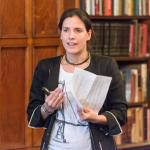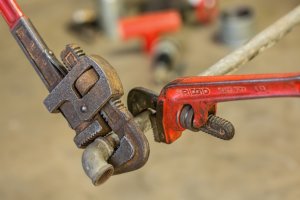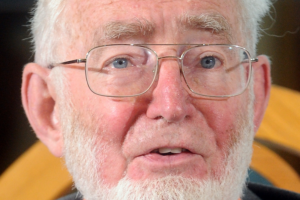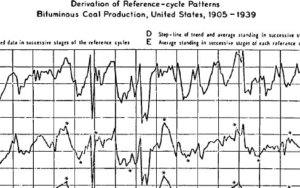In 2006, Greg Mankiw wrote a much commented paper in which he argued that one brand of macroeconomics (neokeynesian) is akin to engineering, by which he meant “solve practical problem,” and “help policmakers devise better policies to cope with the Business Cycle.” Another brand is rather done by (new classical) scientists, he explained, and is about “propos(ing) and test(ing) elegant theories.” He traced the first tradition to Keynes, its theoretical reformulation by Hicks and Modigliani, to the large-scale applied macromodels of Klein, Eckstein and Ando-Modigliani, and to the neo-keynesians. The second stream of course reflects the Lucas-Sargent-Wallace-Kydland-Prescott family tree.
Historian Mary Morgan takes a broader view and explains how the development of measurement (index numbers, time series, panel data) in response to growing public demand, mathematical formalization, a scientific method based on modeling and the application of a toolbox to a wide range of theoretical hurdles and practical issues, tranformed economics into a science of engineering:
“Understanding twentieth-century economics as a science in the mold of engineering is to see that the economics profession came to rely on a certain precision of representation of the economic world along with techniques of quantitative investigation and exact analysis alien to the experience of nineteenth century economics when the extent of such technologies of representation, analysis and intervention were extremely limited. The engineering metaphor also suggests that twentieth-century economics is best characterized as a science of applications and implies a technical art…”
She also emphasized the somewhat complex relationships of economists have forged with goverments in the wake of the Great Depression, the Keynesian Revolution and the war effort, and their gradual recognition as “technical experts,” some able to provide advice concerning policy design:
“From the point of view of economic policy, the engineering notion embodies elements of both the operation and design of systems and is subject to different interpretation at different times in the practice of twentieth-century economics. In terms of operating the economy, control engineering notions were explicitly discussed during the 1950s experience of the “managed” economy. The picture of the macroeconomy was constructed in a way that implied the economy was subject to governmental control. At the same time, under the influence of cybernetic thinking, the economic behavior of each individual was pictured as controlled by personal feedback loops. More flexibly, in the 1960s, governments were thought to have the economic powers only to “fine-tune” the macroeconomy or to nudge the economy back on path.”
Such broad narrative can be supplemented by bringing into the picture those economists who explicitely considered themselves as engineers. French “engineers-economists,” from Jules Dupuis in the mid XIXth to Emile Cheysson and Clément Colson at the turn of the XXth, then François Divisia, René Roy, Jacques Rueff, and Maurice Allais, should be included. Trained in engineering schools such as l’Ecole Polytechnique and L’Ecole des Ponts et Chaussées, their civil servant status induced them to bring their engineering tools to bear on public good pricing, taxation issues, ect…, laying the foundations of micro in the process (see Hebert and Eckelund’s book, Alain Beraud’s paper. The French institutional context of the Xxth century is described in Marion Fourcade’s book). More broadly, in the thirties, the “social engineering” zeitgeist became pervasive. When when advocating eugenics in America (see Tim Leonard’s research) and Sweden, or discussing the possibility and benefits of economic planning in Europe, economists in the Progressive Era exhibited a stunning faith in the ability for their research to help “rationalize” or “control” citizens, firms, and states’ behavior (it is yet unclear to me how these notions of control, planning and social engineering differ from one another). Gunnar Myrdal, for instance, conceived himself as a genuine social engineer, a stance he explained in ”Socialpolitikens Dilemma” (The Dilemma of Social Policy), the program he wrote for the Swedish democratic party in 1934:
“[The new social policy ideology] is intellectual and coolly rational, whereas the old, still dominating, was quite sentimental …. It is to a great degree liberated from the inhibitions of liberal ideology. On the other hand, it is too technically oriented to lose itself in purely general and unworldly model constructions. This is so because it is oriented towards facts, its romanticism is that of the engineer …”
This mixture of planning, control and engineering was brought to the US (where a distinct planning tradition existed) through emigration and was quickly put to test with the war effort. Although economists’ success in organizing production efficiently, one warranted by Keynesian theories, increased their confidence, the outbreak of the Cold War and associated witch-hunting soon induced them to change their wording: “planning” disappeared from economists’ writings, and “social” was separated from “engineering.” Whether these cosmetic changes reflected deeper transformations in economist’ conception of their role requires further investigation (although Al Roth’s use of the engineering metaphor in a paper aimed at defending the role of economist as market designers suggests that such is the case). Also, how engineering relates to notions such as technical economics, formalization, modeling, applying, expertise and policy making should be clarified (intense cliffhanger).






